When Words Fail, Pictures Speak: Using Visual Storytelling to Bring Clarity Inside the Workplace
A dozen memos won’t say what a single sharp image can. That’s become more obvious as companies struggle to communicate clearly with teams who are scattered, hybrid, or simply overwhelmed. Internal corporate communication tends to default to text-heavy updates, but attention spans are shrinking and inboxes are overflowing. Visual storytelling, long the domain of marketing and advertising, is now quietly transforming the way organizations talk to themselves — and it’s long overdue.
Start with the Problem, Not the Logo
Many corporate communications begin with a polished veneer — logos, color schemes, or company slogans — instead of grounding the message in the actual challenge or change employees need to understand. Visual storytelling shines when it begins with the friction: a deadline that’s approaching too fast, a new workflow that’s confusing, or a behavior that needs to change. By visually representing the stakes — a broken process, a bottleneck, a desired outcome — the message lands faster and cuts through noise. Avoid leading with brand identity when what people crave is clarity.
Think of People, Not Charts
A well-made chart can still fail to tell a story if it’s just numbers dressed up in gradients. Data should feel lived-in — tied to roles, consequences, and human action. Instead of showing sales numbers by quarter, tell the story of a sales rep who cracked a new territory and what she did differently. Visual storytelling leans into characters and cause-effect arcs. Use illustrations, comic panels, or motion graphics that anchor data to individual decisions. When people recognize themselves in the story, they pay attention.
Design Materials People Actually Want to Read
Effective internal communication doesn’t stop at digital channels — well-designed print materials can leave a lasting impression in shared spaces like break rooms, hallways, or team bulletin boards. These printed visuals work best when they combine striking imagery, brief messaging, and clear visual hierarchy to guide the eye. Learning how to convert image to PDF allows you to compile JPGs, infographics, and other visuals into a polished format that’s perfect for newsletters or printed roundups. With a reliable JPG-to-PDF converter, you can also lock in your design and prevent unwanted edits, keeping your messaging both professional and secure.
Use Before-and-After Frames
People don’t respond to vague promises of improvement; they respond to contrast. One of the simplest and most effective ways to structure visual storytelling in internal comms is to show before-and-after scenarios. A cluttered helpdesk ticket in one frame, and a streamlined dashboard in the next. A chaotic onboarding process side-by-side with the new, leaner one. This structure doesn’t just showcase the benefits — it invites employees into a shared sense of progress. And in environments that change rapidly, grounding people in progress is vital.
Make Invisible Work Visible
A major failure of traditional corporate communication is its invisibility around behind-the-scenes labor. Support teams, compliance departments, even IT staff often do essential work that no one sees unless something goes wrong. Visual storytelling is uniquely capable of surfacing these contributions. A time-lapse animation of a day in the life of a QA analyst. An infographic that tracks how many phishing attempts were blocked this month. These stories don’t just inform — they foster appreciation and awareness across silos, building stronger workplace culture.
Ditch the Slideshow Format
One of the quickest ways to kill a visual story is to funnel it into a lifeless PowerPoint. Visual storytelling in internal communication thrives when it breaks format — short animated clips embedded in Slack, looping GIFs in a company wiki, illustrated narratives pinned to physical spaces. Internal messages don't need to look like pitch decks; they need to feel like something you’d stop scrolling for. Employees are already consuming visual content constantly outside of work. The same principles apply: catch the eye, hold it long enough to teach, then get out of the way.
Use Analogies That Travel
Abstract initiatives like “operational transformation” or “digital alignment” are notoriously hard to explain. But when paired with a visual analogy — say, shifting from a freight train to a fleet of scooters — the concept becomes sticky. Good analogies in visual form have staying power; they get referenced in meetings, joked about, and passed around. The goal isn’t just to inform but to create shared language. This is especially critical in organizations that span cultures and time zones — analogies translate better than corporate jargon.
Inside a company, not everyone speaks finance, or IT, or ops — but everyone understands a story told well. Visual storytelling sidesteps the hierarchies of internal knowledge and goes straight to shared understanding. It’s not about dumbing things down, but about lighting them up. If organizations want to truly connect across teams, roles, and remote divides, they’ll need to stop writing walls of words — and start showing what they mean.
Unlock new opportunities and grow your business by joining the Fife Milton Edgewood Chamber, where we connect leaders and champion a vibrant community!
This Hot Deal is promoted by Fife Milton Edgewood Chamber.
Membership Directory & Community Resource Guide
Brought to you by the Chamber



